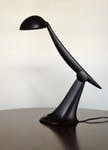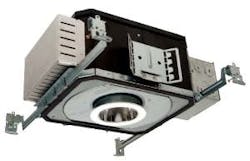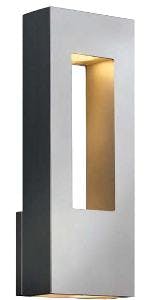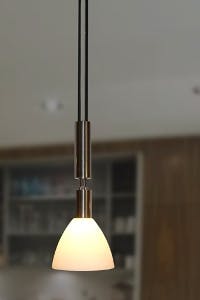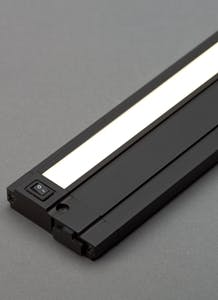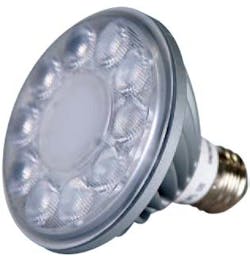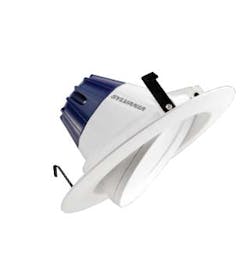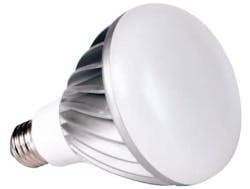The award program doesn’t seek to identify a specific number of winners, but rather uses aggregate judging and collaborative discussion to identify the best of the entrants. Meeting Energy Star requirements is generally a key achievement, although there were notable exceptions this year. Still the program is focused on energy efficiency, and therefore both efficacy and application efficiency were key factors in the judging process.
In the following pages, we will cover the seven products identified as winners providing pertinent specifications and photographs. In addition on page 20, you will find a box that lists the products that were recognized with honorable mentions. There were some outstanding products in that group that fell just a notch below the best.
The most notable trend among the products we saw this year is the increased variety in form factor that fully takes advantage of the small LED sources. Indeed a number of the products entered could not be built with incumbent light sources.
Indeed, there are excellent LED-based products that aren’t designed to produce a large quantity of light, and that won’t be able to meet strict Energy Star efficacy guidelines. Still, these products save significant energy compared to products based on legacy sources and are quite striking in appearance. Let’s discuss a couple.
The judges voted to bestow an LED Fixture Special Recognition award to the WaveForm Chandelier from Hart Lighting, although it fell short of being selected as a winner. But arguably the product was the most stunning of the entrants visually. It could only be realized with LED sources. And the fixture looks perhaps more like a work of art than a light. Still it provides nice light quality and a narrow beam. And though it falls far short of Energy Star efficacy requirements at 14.1 lm/W, it only consumes 46.2W.
Another example is the Atlantis outdoor wall sconce from Hinkley Lighting (pictured on page 18). That product was chosen as a winner. It uses two LEDs – one to provide light within the open rectangular area inside the fixture and the second to provide down light from the bottom of the fixture. The design would be an elegant addition to most homes. It’s Dark Sky compliant. And while it lacks Energy Star compliance, it uses a miserly 11.1W.
Portable desk lamps were another area where entered products clashed a bit with Energy Star guidelines. Products from Prism, LittleFootprint Lighting, and Cielux all won honorable mention. The group exhibited innovations such as touch control and generally low energy usage. But they are also relatively expensive for residential applications and the value part of the judging criteria made it tough to declare one a winner.
The Energy Star issue centers on the fact that the desk lamps are considered non-directional lighting in the Energy Star Residential program. That makes little sense and requires testing of the light source separately from the luminaire. Yet the best of the class has the light source fully integrated in the fixture.
Ironically the HeronLED product from LittleFootprint has been qualified in the Energy Star Commercial program that correctly classifies portable desk lamps as directional lighting. That lamp was also the most efficient desk lamp judged using only 4W and delivering 55 lm/W in efficacy. Moreover there is more than one angle to being environmentally friendly, and the lamp is made from recycled electronic waste.
Ironically the HeronLED product from LittleFootprint has been qualified in the Energy Star Commercial program that correctly classifies portable desk lamps as directional lighting. That lamp was also the most efficient desk lamp judged using only 4W and delivering 55 lm/W in efficacy. Moreover there is more than one angle to being environmentally friendly, and the lamp is made from recycled electronic waste.
As for the other winners, you will find innovative features in each and every one and the remainder are either already Energy Star qualified or that qualification is in progress. Cooper’s IRiS P3LED, for example, was the first Zhaga-compliant luminaire on the market. The AFX Lighting Centre pendant has a counter-balanced pulley system that allows for incredibly smooth height adjustments. Tech Lighting used remote phosphor to deliver extremely uniform light in its Unilume under-cabinet fixture. Those are just a few examples of innovation in the competition.
We should also address the adaptive controls area. The competition saw increased participation in that area this year and the organizers hope to continue to see more controls-oriented products entered because such controls can greatly increase energy savings by dimming lights or turning lights off in unoccupied spaces.
The judges did not choose a winner in the controls space, although there were a number of interesting products. But companies are struggling at this point to deliver products that the typical homeowner can buy, install, and commission. Indeed the judging panel had difficulty navigating the wiring and use instructions. The judges did bestow a Lighting Control Innovative Concept award to Legrand for its Adorne lighting-control system than includes a wireless gateway and can handle lighting throughout a house with controllable lamp plug-in modules, remote controls, and touch switches. But the judges felt the product would be too expensive and complicated for many homeowners.
Cooper Lighting, IRiS P3LED This Energy Star qualified luminaire offers a 3 1/2-inch aperture and features an LED optic available in 10°, 15°, 25° and 40° beam distributions that are interchangeable. The P3LED allows for 365-degree rotation and 45-degree tilt and can be dimmed down to 10 percent. This fixture outputs 1000-1025 lm, depending on the trim, at a color temperature of 3100K with an efficacy of 49-50 lm/W and a CRI of 82. Visit the designer, Cooper Lighting, at www.cooperlighting.com.
Hinkley Lighting, ATLANTIS outdoor wall sconce
This LED wall sconce integrates two 4.5W LEDs, and operates as a dual light source. This Dark Sky compliant fixture minimizes glare, outputs 286 lm, has an efficacy of 25.7 lm/W, and a CRI of 83. This product does not meet Energy Star efficacy requirements. Visit the designer, Hinkley Lighting, at www.hinkleylighting.com.
AFX Lighting, Centre Contemporary LED Pendant
This pendant fixture comes in single, double or triple pendant options, delivers 48 lm/W in efficacy, and features a contemporary design that can be set at variable heights. Each pendant is powered by a 7W GU10 based light engine which produces 470 lm at a color temperature of 2657K, has a CRI of 82, and is rated for 35,000 hours. This product is designed to meet Energy Star requirements although qualification is in progress. Visit the designer, AFX Lighting, at www.afxlighting.com.
Tech Lighting, Unilume LED Undercabinet
This LED-based under-cabinet fixture uses tightly clustered blue pump LEDs, a 98% reflective mixing chamber and a remote phosphor lens in a housing less than 3/4 inch deep. This 10.5W fixture outputs 645 lm at a color temperature of 3074K with an efficacy of 61.4 lm/W and a CRI of 80. This product is designed to meet Energy Star requirements although qualification is in progress. Visit the designer, Tech Lighting, at www.techlighting.com.
This short neck 12.4W LED retrofit lamp is designed for use in home and commercial applications as a replacement lamp for higher wattage incadescent and halogen light sources found in track fixtures and recessed ceiling cans. Its design allows for multiple beam patterns to fit different applications and is available in four color temperature variations, 2700K, 3000K, 4000K, and 5000K. This bulb outputs 732.6 lm with an efficacy of 59 lm/W and a CRI of 86.1. This product is designed to meet Energy Star standards although qualification is in progress. Visit the designer, Lighting Science Group, at www.lsgc.com.
This Energy Star qualified LED downlight retrofit kit can install easily in most standard six-inch insulated ceiling (IC), non-IC, and airtight housings. The adjustable gimbal features a smooth travel from nadir to a 35˚ tilt and includes a friction blade design that enables the downlight to be installed in any position within the housing aperture. This 14.8W retrofit kit outputs 975.3 lm at a color temperature of 3029K with an efficacy of 65.9 lm/W and a CRI of 84.4. Visit the designer, Osram Sylvania, at www.sylvania.com.
Lighting Science Group, Definity BR30 lamp
This 13.6W LED retrofit lap is designed for use in home and commercial applications as a replacement for higher wattage incandescent light sources that are found in recessed ceiling cans. This bulb, when installed, looks and performs like products consumers are familiar with and is available in four color temperature variations, 2700K, 3000K, 4000K, and 5000K. The lamp outputs 826.7 lm with an efficacy of 60.6 lm/W and a CRI of 80.7. This product is designed to meet Energy Star standards although qualification is in progress. Visit the designer, Lighting Science Group, at www.lsgc.com.


